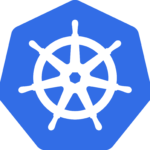
This is great if you are a cog in a wheel of a big organisation, and you have a business which is about to head to infinity. But, if you are just looking to develop and learn a bit on your laptop, and don’t have access to (moderate) big iron, it can be frustrating.
My laptop is no slouch. 2C4T, 16GB ram with a 7200U. But, well, it is a bit challenged when posed with a lot of work. And when you start talking about ‘scale-out’ and ‘min-replicas=3’ for things, the heat heads to infinity, and the performance towards 0.
So I’ve been looking at other methods. And there are two vectors.
- Making the big complex stuff installable by the ‘hobbyist’ without learning the universe or operating the full stack
- Tuning things down while keeping enough behaviour to be real.
- (or 3 really, get some cloud credits and ignore these 2 problems).
One method of course is just use external machines. But sometimes you are mobile and don’t have that elusive Internet.
Kubernetes is an example of these beasts. It uses a lot of resources, its large, hard to install. None of this matters when you add the 1000’th instance to a big cluster. But when you are adding the first…
One tool I’ve been using is ‘kube-spawn‘. I’ve made a few pull requests to it, it allows installing a multi-node Kubernetes with a CNI (weave|calico|flannel|canal), all using containers. So your single host runs e.g. 4 containers (1 master, 3 nodes). From there, the universe thinks you have a 3-node cluster and you can do things like test ‘network-policy’ or ‘StatefulSet’.
Of course, a lot of people use minikube. It works. But not everyone has enough ram to hard-partition it into that VM it wants. Why not run native if you are just testing things out?
Got docker running? Then you can just do this below.
As a warning, although Kubernetes will be running inside docker containers, it now has quite a bit of access to your host, so I wouldn’t use this with any external network access. Caveat emptor. YMMV.
sudo curl -Lo /usr/local/bin/minikube https://storage.googleapis.com/minikube/releases/latest/minikube-linux-amd64 && chmod +x /usr/local/bin/minikube export KUBECONFIG=~/.kube/config-minikube sudo -E minikube start --apiserver-ips 127.0.0.1 --apiserver-name localhost --vm-driver=none --v=10
If you see kube-dns restarting with this message:
`nanny.go:116] dnsmasq[34]: Maximum number of concurrent DNS queries reached (max: 150)`
Then you might need to:
rm -f /etc/resolv.conf ln -s /run/systemd/resolve/resolv.conf /etc/resolv.conf
Tired of it? Reset it all:
sudo -E minikube delete ; sudo rm -rf /etc/kubernetes/ /var/lib/kubeadm.yaml

Leave a Reply